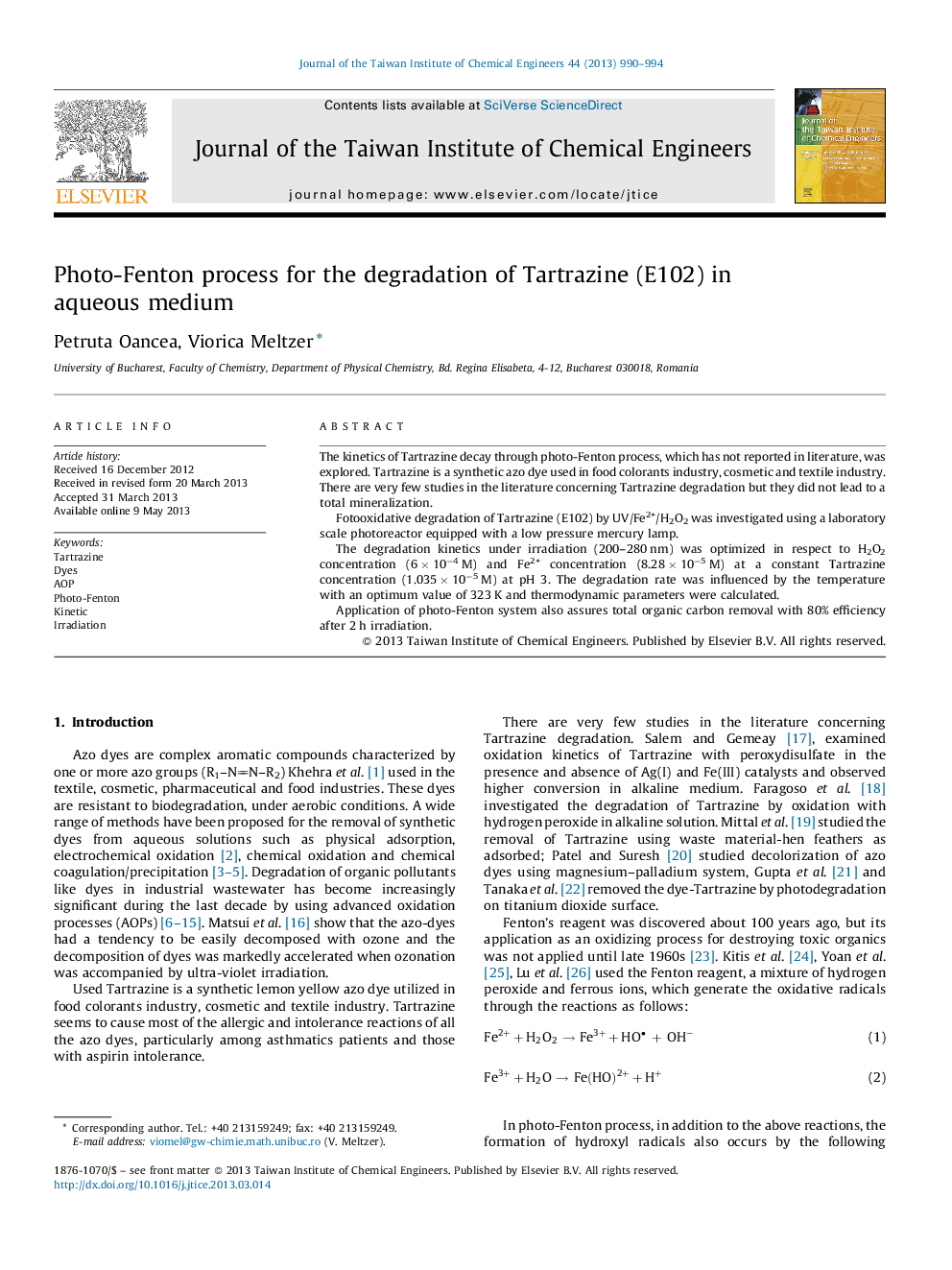| Article ID | Journal | Published Year | Pages | File Type |
|---|---|---|---|---|
| 691052 | Journal of the Taiwan Institute of Chemical Engineers | 2013 | 5 Pages |
•Tartrazine degradation follows a pseudo first-order kinetics leading to its total disappearance by photo-Fenton process.•The total organic carbon removal (80%) indicates the presence of some small organic molecules in solution, after 2 h irradiation.•The degradation rate was influenced by the temperature with an optimum value of 323 K.
The kinetics of Tartrazine decay through photo-Fenton process, which has not reported in literature, was explored. Tartrazine is a synthetic azo dye used in food colorants industry, cosmetic and textile industry. There are very few studies in the literature concerning Tartrazine degradation but they did not lead to a total mineralization.Fotooxidative degradation of Tartrazine (E102) by UV/Fe2+/H2O2 was investigated using a laboratory scale photoreactor equipped with a low pressure mercury lamp.The degradation kinetics under irradiation (200–280 nm) was optimized in respect to H2O2 concentration (6 × 10−4 M) and Fe2+ concentration (8.28 × 10−5 M) at a constant Tartrazine concentration (1.035 × 10−5 M) at pH 3. The degradation rate was influenced by the temperature with an optimum value of 323 K and thermodynamic parameters were calculated.Application of photo-Fenton system also assures total organic carbon removal with 80% efficiency after 2 h irradiation.
